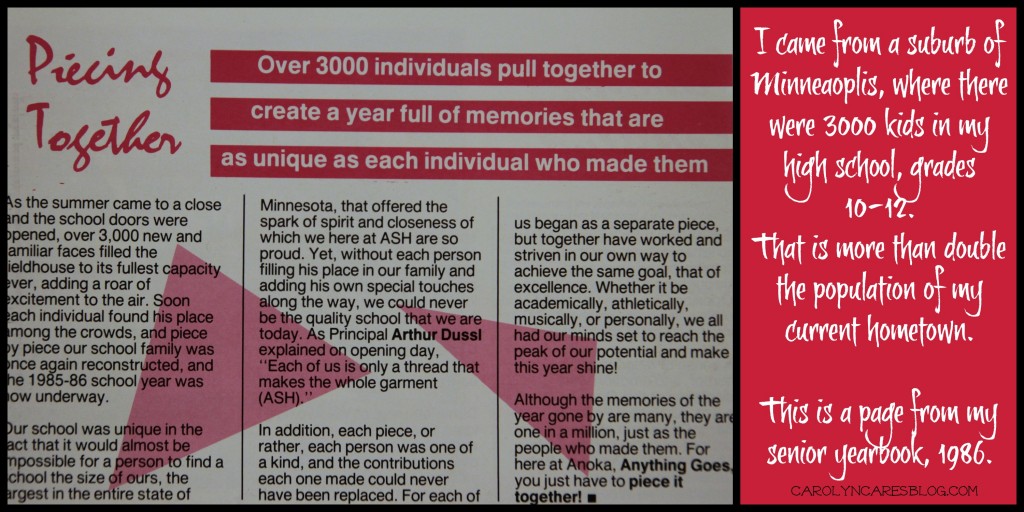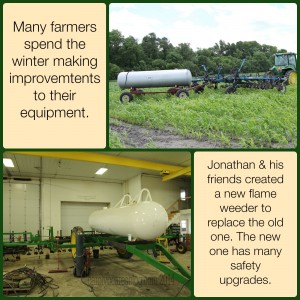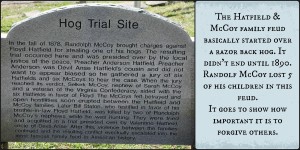I grew up in Champlin, Minnesota, one of the northern suburbs of Minneapolis. I had a great childhood, in part because we lived in a neighborhood where kids would get together and play ditch-em, we’d ride our bikes, or just run around the yard playing whatever sport we felt like at the time. I have many fond memories of our house there.
In 1986, I graduated from Anoka Senior High School with a class of over 675 students. On any given day, there were close to 3000 students cruising through the halls of the high school. I had friends in many groups, but mostly preferred those who were in my youth group from church since they were the ones I saw most often. Our academic classes weren’t necessarily split into grades, so sometimes you weren’t sure if someone was in your graduating class or not. It was interesting sitting through graduation ceremonies and realizing you didn’t know someone in your class. That doesn’t happen where I live now!
Jonathan graduated in a class of 40, including 2 foreign exchange students. I’m sure if I asked some of those classmates where everyone resides today, they would be able to tell me. Most of them started kindergarten together, and a few have known each other pretty much since birth. There are good things, and bad things about being a close class. 🙂
Jonathan and I have been married for 26 years, and I still find it amazing that our town population is less than half of what the student body was at my high school. It was a bit of a culture shock when I first moved to the farm, but now I wouldn’t trade it for anything. Every day I am thankful that I met Jonathan, married him, and am now his right hand (wo)man.
I’m pretty proud of where I came from, but I’m even more proud of where I am today.





























